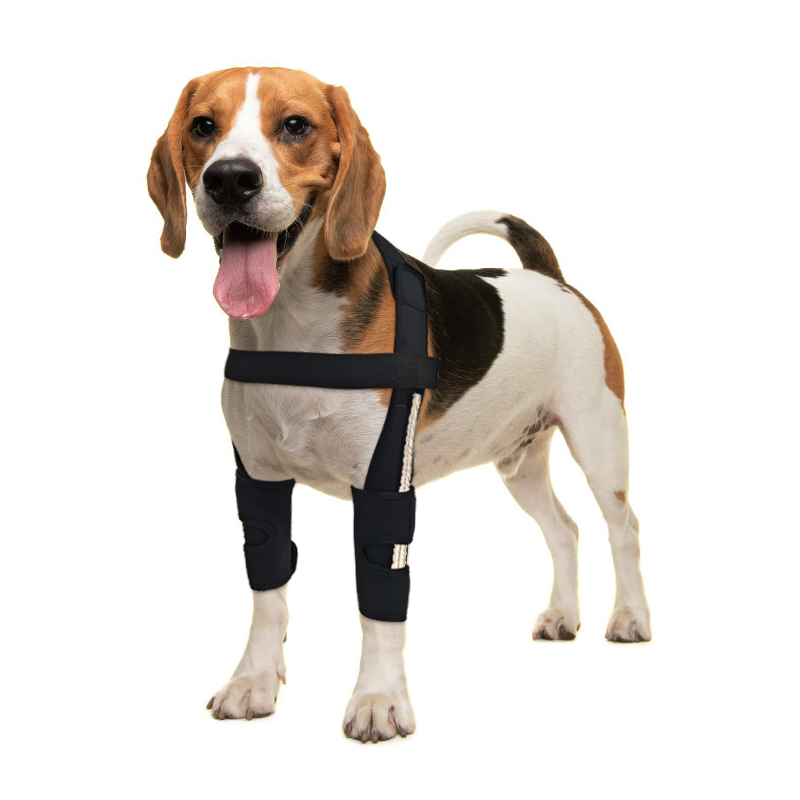As pet owners, we always strive to provide the best care for our furry friends, especially when they face health challenges. One such challenge that dogs may encounter is elbow dysplasia or other elbow-related issues. Dog elbow braces, or elbow dysplasia braces for dogs, have emerged as a potential solution to support dogs with these problems, but do they really work?
Understanding Elbow Issues in Dogs
Elbow dysplasia is a common condition in dogs, particularly in larger breeds. It involves the abnormal development of the elbow joint, leading to pain, inflammation, and reduced mobility. Other elbow-related issues may include arthritis, ligament injuries, or post-surgical recovery needs. These conditions can significantly impact a dog's quality of life, making it essential to explore viable treatment options.
What Are Dog Elbow Braces?
Dog elbow braces are orthopedic devices designed to provide support, stability, and compression to a dog's elbow joint. They are typically made of soft, durable materials and are adjustable to ensure a snug fit. These braces can be used for various purposes, including:
- Pain Relief: Reducing pressure on the affected joint and alleviating pain.
- Stabilization: Providing stability to the joint and preventing excessive movement.
- Support: Assisting in the healing process post-surgery or injury.
- Mobility Enhancement: Improving a dog's ability to move comfortably.
Benefits of Dog Elbow Braces
-
Pain Management: By providing compression and support, elbow dog brace can help reduce pain and discomfort in dogs with elbow issues. This can improve their overall well-being and quality of life.
-
Enhanced Mobility: Elbow braces can help stabilize the joint, making it easier for dogs to walk, run, and play. This increased mobility can contribute to better physical and mental health.
-
Prevent Further Injury: For dogs recovering from surgery or injury, dog elbow dysplasia brace can prevent further damage by limiting unnecessary movement and providing protection.
-
Non-Invasive Solution: Unlike surgery, elbow braces offer a non-invasive option for managing elbow problems. This can be especially beneficial for older dogs or those with underlying health conditions that make surgery risky.
-
Customizable Fit: Many dog elbow braces are adjustable, allowing for a customized fit that ensures maximum comfort and effectiveness.
Considerations When Using Dog Elbow Braces
-
Proper Fit: It's crucial to ensure that the brace fits correctly. A poorly fitted brace can cause discomfort or exacerbate the problem. Consulting with a veterinarian or a specialist can help in selecting the right brace and ensuring a proper fit.
-
Monitoring: Regularly monitoring the dog's response to the brace is essential. If there are signs of increased discomfort, chafing, or skin irritation, adjustments may be needed.
-
Training Period: Some dogs may need time to adjust to wearing an elbow brace. Patience and positive reinforcement can help them get used to the new accessory.
-
Not a Cure-All: While elbow braces can provide significant benefits, they are not a cure-all solution. They are best used as part of a comprehensive treatment plan that may include medication, physical therapy, and lifestyle changes.
-
Consult a Veterinarian: Always consult with a veterinarian before introducing an elbow brace. They can provide guidance on whether a brace is suitable for your dog's specific condition and how to use it effectively.
Conclusion
Dog elbow braces, or elbow dysplasia braces for dogs, can be an effective tool in managing elbow-related issues, offering pain relief, enhanced mobility, and protection from further injury. However, their success largely depends on proper fitting, regular monitoring, and being part of a holistic treatment plan. Always consult with a veterinarian to determine the best approach for your dog's specific needs.



0 Comments